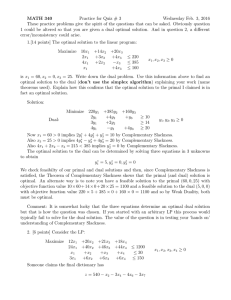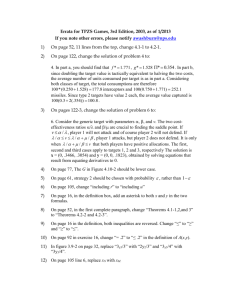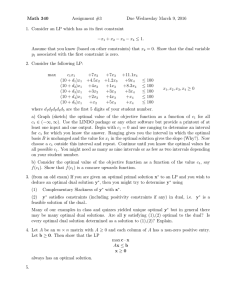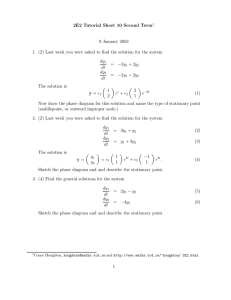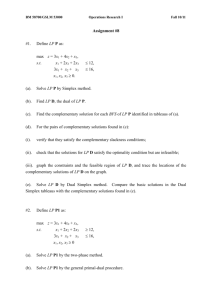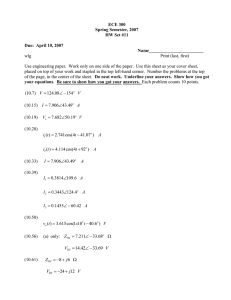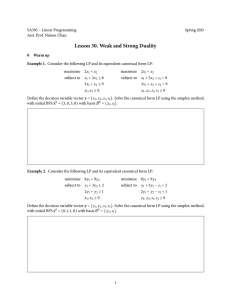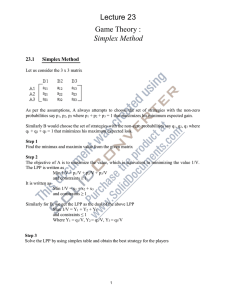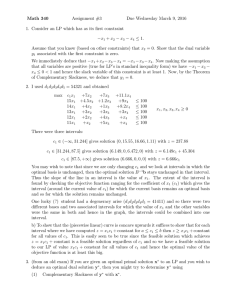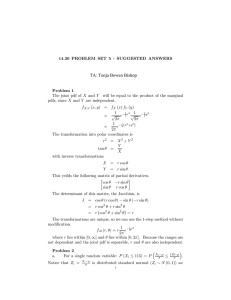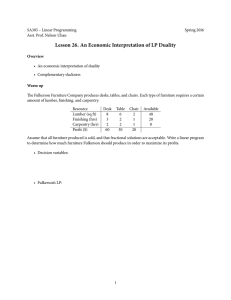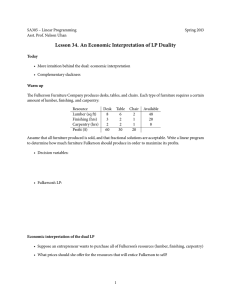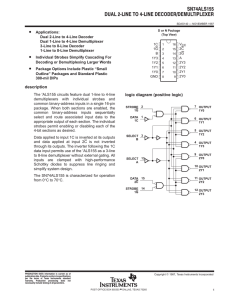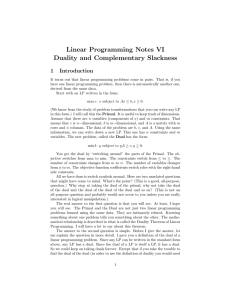9.7
advertisement
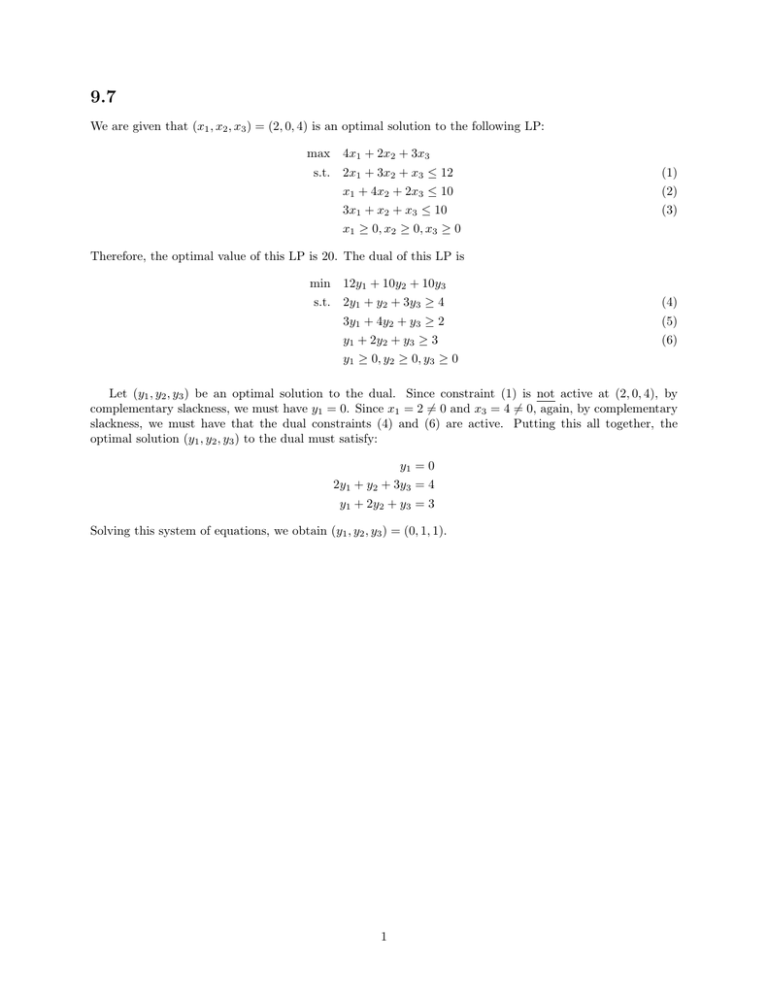
9.7 We are given that (x1 , x2 , x3 ) = (2, 0, 4) is an optimal solution to the following LP: max s.t. 4x1 + 2x2 + 3x3 2x1 + 3x2 + x3 ≤ 12 (1) x1 + 4x2 + 2x3 ≤ 10 (2) 3x1 + x2 + x3 ≤ 10 (3) x1 ≥ 0, x2 ≥ 0, x3 ≥ 0 Therefore, the optimal value of this LP is 20. The dual of this LP is min 12y1 + 10y2 + 10y3 s.t. 2y1 + y2 + 3y3 ≥ 4 (4) 3y1 + 4y2 + y3 ≥ 2 (5) y1 + 2y2 + y3 ≥ 3 (6) y1 ≥ 0, y2 ≥ 0, y3 ≥ 0 Let (y1 , y2 , y3 ) be an optimal solution to the dual. Since constraint (1) is not active at (2, 0, 4), by complementary slackness, we must have y1 = 0. Since x1 = 2 6= 0 and x3 = 4 6= 0, again, by complementary slackness, we must have that the dual constraints (4) and (6) are active. Putting this all together, the optimal solution (y1 , y2 , y3 ) to the dual must satisfy: y1 = 0 2y1 + y2 + 3y3 = 4 y1 + 2y2 + y3 = 3 Solving this system of equations, we obtain (y1 , y2 , y3 ) = (0, 1, 1). 1

